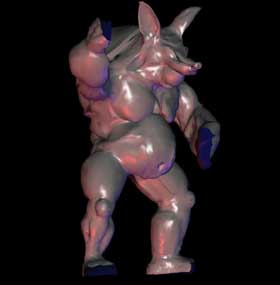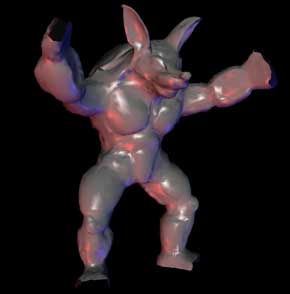


Interactive Multiresolution Mesh Editing

|

|
|
|
|
|
Building models of scanned geometry typically involves the construction of an implicit surface given some volumetric description. This is true in medial applications which often start with MRI or CT scans, as well as in reverse engineering applications in which range scanners are used for the same purpose. Typically geometry is built from these volumetric data sources using the marching cubes algorithm or one of its variants. The resulting meshes are not satisfactory for numerical simulations or interactive manipulation because of their topological properties. We are currently investigating the construction of mesh extraction algorithms which yield multiresolution meshes directly from volumetric data sources. These are ideally suited for multiresolution (wavelet) numerical solvers, compression, and hierarchical editing.
|
[ZORI97]Denis Zorin, Peter Schröder and Wim Sweldens, "Interactive Multiresolution Mesh Editing," to be published in the Proceedings of SIGGRAPH "97.
| Home | Research | Outreach | Televideo | Admin | Education |